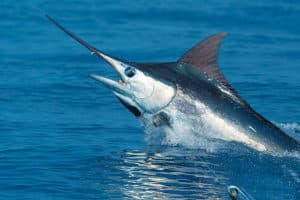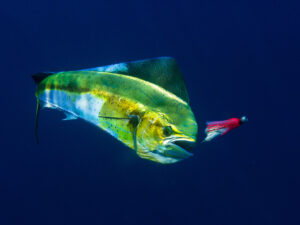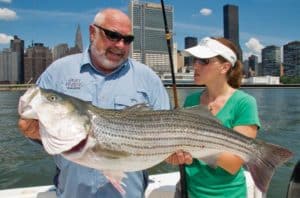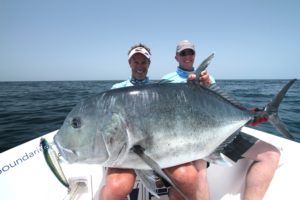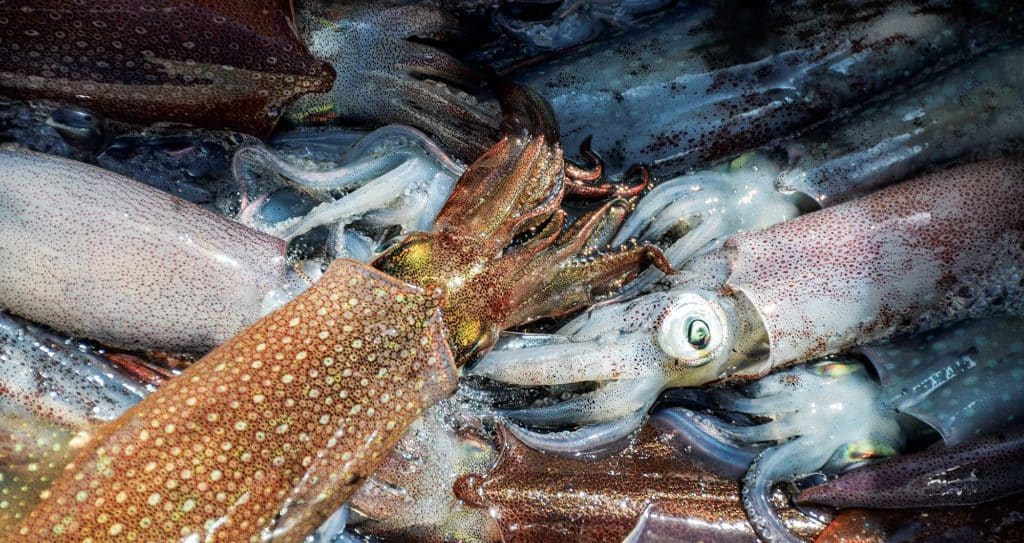
Loligo squid will soon pour into the sounds and bays of southern New England. These fascinating and tasty creatures do just that each spring when water temperatures reach 50 degrees.
Squid carpet shallow seaweed and eel-grass beds within a mile of the sandy beaches where they cluster in dense schools to spawn. The loligo migration peaks around the full moon in May, and like a switch, it turns on the recreational-fishing season in the Northeast.
Commercial squid fishing boats trawl federal waters outside the 3-mile line, leaving the prime inshore spawning grounds to rod-and-reel anglers. A fleet of small boats of many shapes and sizes congregates in close proximity in prime areas to jig side by side for squid. If you can’t see the squirts of squid when lifted over gunwales and hear the laughter, you’re too far away.
A six-pack charter fishery works two shifts a day, giving shore-bound anglers a chance to fill their coolers with fresh, tasty squid. Squid fishing in these conditions works perfectly for young anglers, with nonstop action, warm midday sun, easy sea conditions, and a fun time with ink and water flying everywhere.
But wait: There’s more! As the squid run peaks, it ignites two southern New England recreational and charter fisheries: the bottom fishery for scup, fluke and black sea bass, and the top- and midwater fishery for bluefish and striped bass.
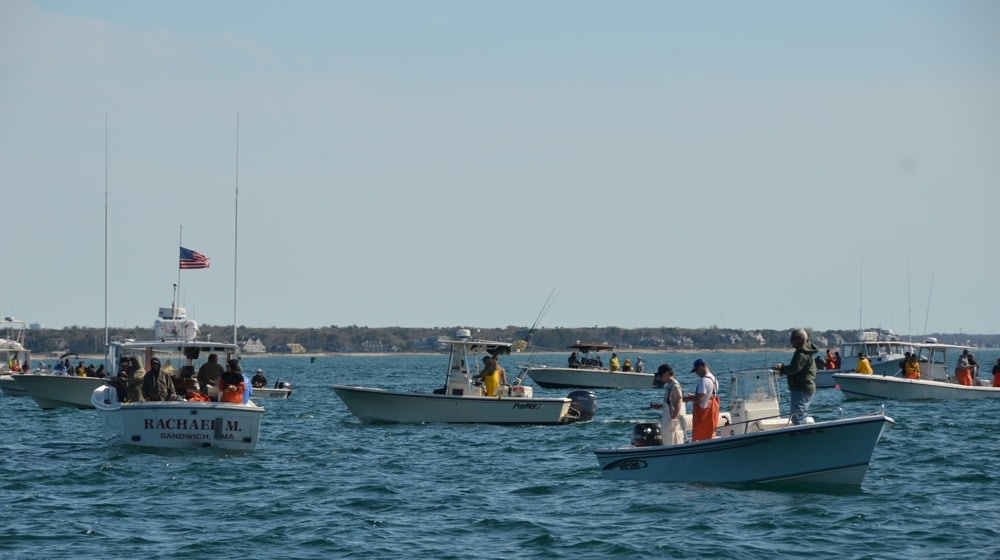
Finding and Catching Squid
Locating squid in May is easy. First, find out where the squid draggers are working. Second, locate the small-boat squid fleet. Third, find your own patch and catch ’em.
Squid congregate in water 15 to 30 feet deep off the south coast of New England. A well-known stretch of water between Mashpee and Yarmouth on the south coast of Cape Cod is a red zone for squid. Party boats, six-packs, and private boats cluster around small rock piles and ledges that dot this sandy coast looking for signs of squid both on their fish finders as well as by the bent rods in nearby boats.
This is one fishery where closer is better. It’s usually OK to set up as close as 30 yards to other boats with squid coming over the gunwales. Some boats drift-fish and some anchor; it’s important when joining a recreational squid fleet to match what everyone else is doing.
In bright sunlight, squid hang close to the bottom. On a fish finder, they look like haystacks ascending from the flat bottom. When squid spawn, a group of males surrounds a female, competing to make the connection. The fertilized, naturally sticky egg sacs adhere to grass, seaweed or rocks on the seafloor in large clusters. These aggregations of squid eggs resemble ghostly, orange-tinted fingers, clustered together by the dozens.
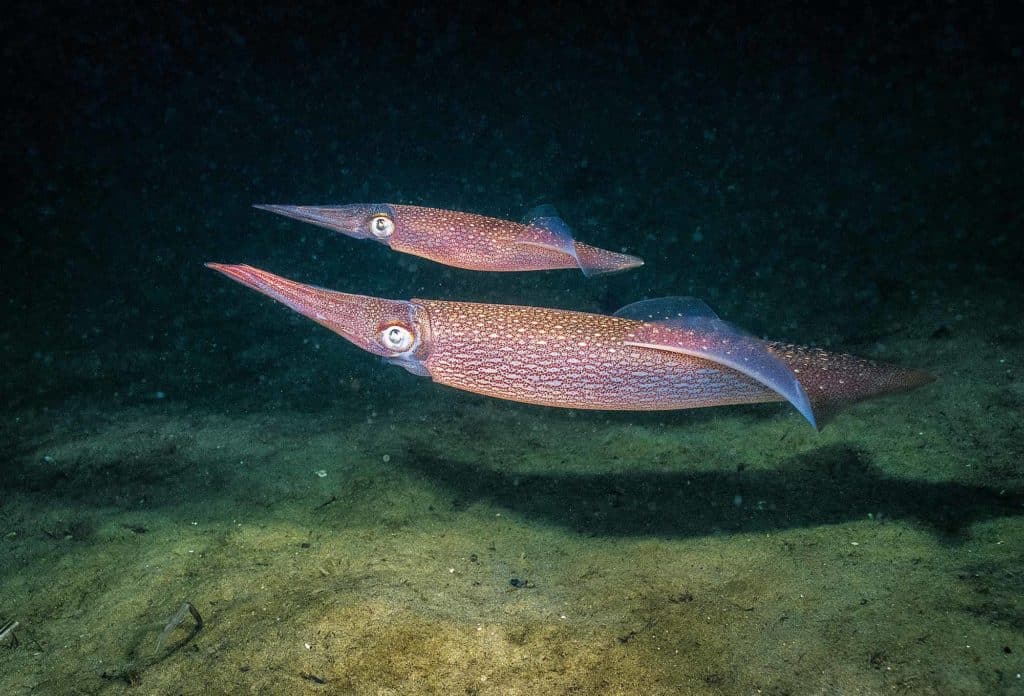
Once the water temperature reaches 50 degrees, I’m out on the water, prospecting. I prowl water in the 20- to 30-foot-deep range, keeping one eye out for diving gannets or sitting gulls, and the other eye on my fish finder. If I see any sign of squid, I’ll stop the boat and drift for 10 minutes with two rods out, looking for that first squid. If I catch one, I know I’m in the zone. Then, if they start coming over the rail on a regular basis, it’s time to go to work!
If possible, I’ll drift for a mile or two, trying to find the subtle dips or humps that hold the biggest aggregations. The southern coast of Cape Cod is mostly sandy, but the area from New Seabury to Hyannis where the squid swarm features a few small ledges and rock piles that congregate mating squid and attract boats hoping to load up on squid.
If I can’t find them on a blind drift, I’ll visit one rock pile after another, trying to drift them, exploring each in turn for that first bite. Once I get the bite or see another boat pull up a squid, I’ll position the boat down-current of the ledge and drop an anchor.

Rig to Jig
A squid rig reflects fishing at its simplest: a pair of dropper loops, 8 to 10 inches apart, each with a squid jig and, another 8 to 12 inches below them, a 2- to 3-ounce weight on the bottom. You can find almost as many types of squid jigs as fishing lures in Northeast tackle shops in spring.
A double or triple row of steel spikes angled up from the bottom characterize squid jigs. You don’t actually hook squid: When the jig’s action stimulates an attack, the squid’s tentacles become impaled on the spikes.
From my experience, in shallow, clear waters under bright sunlight, the realistic but expensive Japanese jigs out-fish the simpler, traditional, hard-plastic squid jigs. Glow-in-the-dark coloring is unnecessary because this is a daytime fishery.
Lures for squid need to suspend horizontally to appear the most lifelike. Neutrally buoyant lures produce best off a dropper loop. At times size seems to matter also, with the 3- and 4-inch jigs outproducing larger jigs of 6 to 8 inches. A couple of final tips: Fish a light leader, nothing more than 20-pound, and keep all weed off the rig. Squid have large eyes and stealth is important.
I fish these rigs off light spinning rods using 8- or 10-pound line. A pair of jetting 12-inch squid will put up a battle on light tackle, and the spinning reel gives you the ability to prospect by casting if needed.
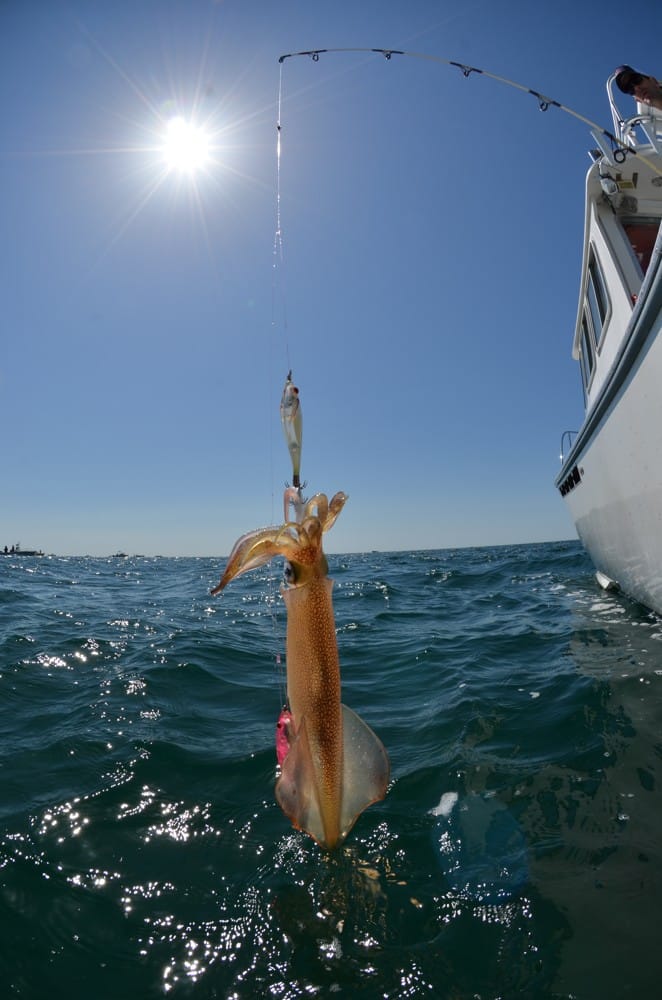
Strategies for Suckers
Fishing the rig is often as simple as putting it on the bottom and waiting for the bite. If that isn’t producing, a slow and short jigging action is best. Remember, you’re fishing in shallow water, so a gentle jigging motion — raising the rig no more than 2 feet off the bottom — is best for keeping the jigs in the strike zone. Rarely do you want “extreme” jigging; if your jig is more than 3 feet from the bottom, you’re probably out of the zone.
I find it productive to have at least one person on the boat casting his rig 20 yards down-current, letting it sink to the bottom, then retrieving slowly while maintaining periodic contact with the bottom. This will move the rig in big arcs along the bottom of the water column. We often have squid jump on the jigs while the rig is being retrieved, while others follow the hooked squid right to the boat.
A final trick worth relating involves dropping your jig to the bottom, pointing your rod tip down into the water, and rapidly moving the rod tip in figure eights through the water. This rapid but tight movement can generate strikes when the bite slows. This has worked well for me when we see followers chasing other hooked squid to the boat.
Each spring my loligo goals are simple: Catch a few bucketfuls, with 75 percent earmarked for bait, and the rest for dinners of squid fried or stuffed and baked.
I dry off the bait squid and bag/vacuum-seal them, graded per intended use. I make four-packs of the best-looking large squid for offshore swordfish and tuna baits, and six-packs of smaller ones for inshore fluke and sea bass baits. I also take a couple of fresh ones with me to some of my favorite striped bass spots that night or the next day.
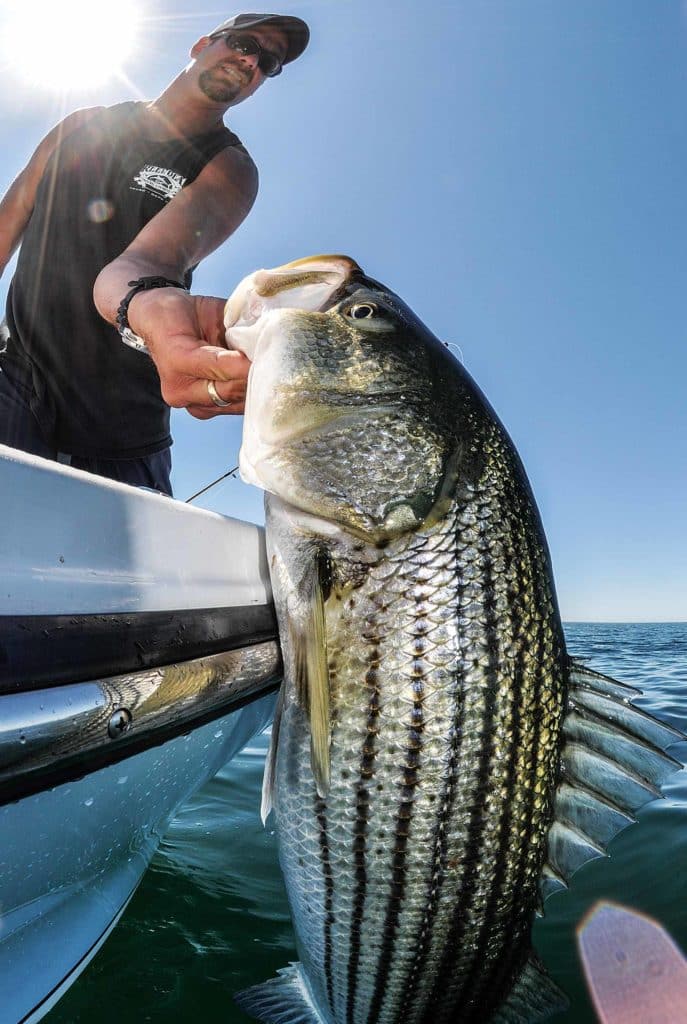
Target the Fish That Eat the Squid
Catching squid is a fun warm-up for bending rods all summer, but the best part of the loligo migration is what follows afterward. Almost immediately after that May full moon, you start feeling sharp strikes on your squid jigs, indicating it’s time to change gears and target the fish that eat the squid.
Two major sets of predators follow hard on the squid spawn — a bottomfish migration of scup, black sea bass and fluke, and a midwater migration of bluefish and striped bass.
The second week in May on Cape Cod brings a cornucopia for anglers; each day they have to decide how they want to fish and what they want to catch. Either squid or artificial lures mimicking squid produce equally well
If it’s calm, I can sight-fish for bluefish in 3 feet of water using artificial squid lures such as Rangers, Atoms or Cotton Cordell poppers. If it’s choppy, I can go to one of the many rips in Vineyard and Nantucket sounds to look for stripers chasing squid out of the water. Poppers and soft plastics are killer there.
In either case, the technique is simple: Toss out something with red, orange or white colors; pop and skip it across the surface to emulate a fleeing squid. This is the place for light tackle because, for the most part, you’re dealing with 8- to 10-pound fish chasing squid.
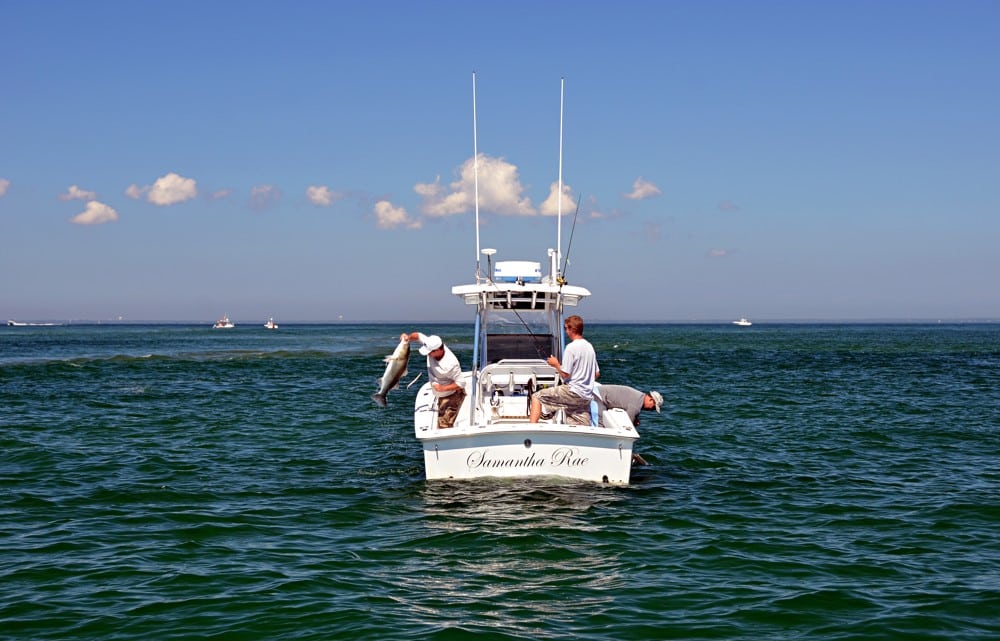
Another approach for stripers and blues involves taking a bucket of fresh squid down to the beach, along with striper rods, 5/0 circle hooks and 2- to 3-ounce bank sinkers. Enjoy the sunset and wait for the first bite. Most of the stripers will be small — 20- to 24-inch throwbacks — but eventually you’ll end up with a 34-inch, 15-pound keeper.
Blues are great sport, but if I want dinner, I might bottomfish with jigs or cut squid for dinner-plate scup and humphead black sea bass. In that case, I look for either hard bottom in 40 to 50 feet, or one of the many wrecks in Vineyard Sound. Once I have found a likely spot, I want my bait or jig gently working within 3 feet of the bottom. A piece of cut squid or metal dancing in the current is irresistible.
Read Next: Six Favorite Striper Spots
Early in the season, some real monsters — 20-inch sea bass and 16-inch dinner-plate-size scup — will give you a tussle in deeper water. As with fishing for stripers and bluefish, going light on the tackle can make the action memorable. Once you find fish schooled on the bottom, it’s easy to drift the same area again and again.
Finally, I can also use cut-squid strips on a 3-ounce lead-head jig, and drift the sandbars and shoals for early-season fluke. This is lazy and easy fun fishing where we prospect both sides of a shoal for the hope of a doormat.
In May, the fluke have not been picked over as much as in midsummer, increasing your chances of a large one. Fluttering a piece of squid along the sandy bottom using the jig head to kick up sand as you drift along generates strike after strike from aggressive, newly arrived fluke looking for an easy meal. It might take 10 throwbacks to get one 18- to 20-inch dinner for two, but if you keep at it, you will be rewarded.
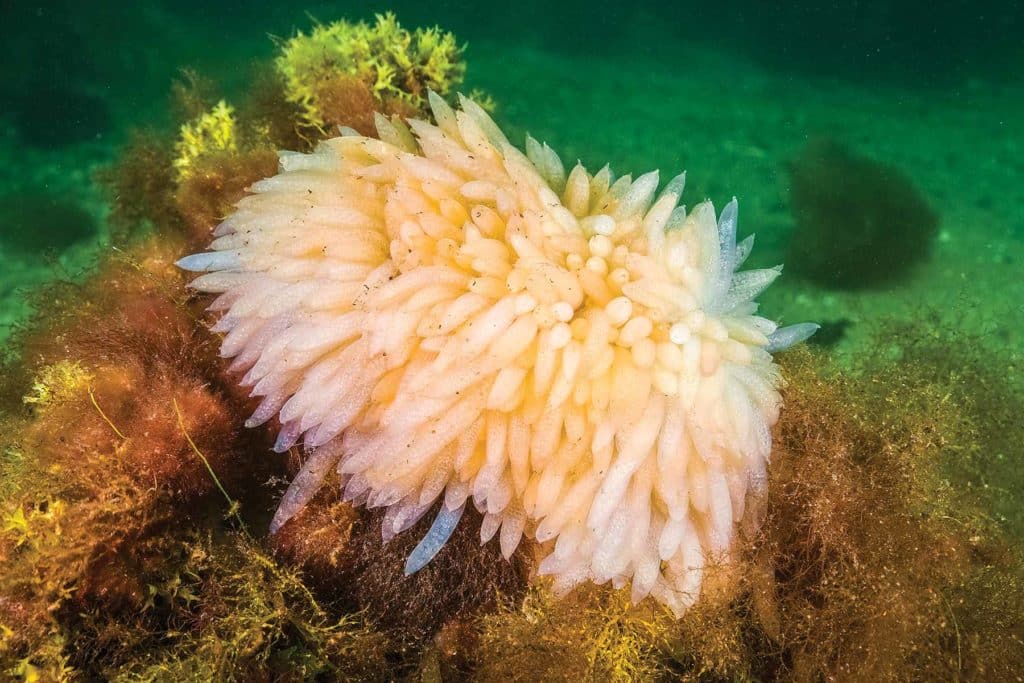
The Strange and Sensational Squid
Loligo squid, also known as longfin squid, are so-called for the genus to which they belonged: Loligo. (Ed. note: Just recently, Loligo pealei has been declared by scientists to be Doryteuthis pealei. But the term “loligo” remains in widespread common use, so it remains in this article.) They can be found worldwide and offer an extremely productive fishery in Northeast waters. They migrate into nearshore waters each spring to spawn, then move back to deeper water when done.
Their arrival in late April is signaled by as many as 30 or more commercial squid draggers working inshore channels and troughs a few miles from shore in Nantucket, Vineyard and Rhode Island sounds. By June, the bulk of squid and the draggers have moved offshore behind Block Island, Martha’s Vineyard and Nantucket, providing a boost to the New Bedford and Port Judith economies by catching and selling thousands of metric tons of loligo squid to a worldwide market.
These loligo range from 6 to 12 inches (“tube length”), with eight short arms and two longer tentacles, almost the same length as the body. When you haul up an angry squid gazing with massive eyes, hanging on by its grasping tentacles (waving and reaching out), measuring at least 20 inches from hook to mantle, sporting vivid colors, and jetting a mix of water and ink, it can be a formidable creature, especially for young children. Care must be taken: Inside the maelstrom of writhing arms is a sharp, parrotlike beak that can slice into a careless finger.
Squid belong to the cephalopods and, like octopus and cuttlefish, have pigmented cells called chromatophores in their skin. Squid use these cells to camouflage themselves against their background. Catching squid by day gives the angler a chance to see a squid change its color in an instant to match the white of a deck or a red bucket. Waves of color and iridescence run down a squid’s body after it’s captured.
The best (or worst) part of the squid experience is the ink. Few fishing experiences are more fun for a bunch of 10-year-olds than holding squid and pointing them at each other in a squid-ink fight. Even adult anglers can’t help but laugh when one of them gets a face full of ink from a jetting squid. While squid fishing does make a mess, bleach, a stiff brush and a little elbow grease will clean up the mess.
About the Author: Capt. Larry Backman, a passionate Northeast offshore fisherman, has logged more than 125 canyon trips over the past 20 years. While he fishes recreationally, he also holds a U.S. Coast Guard 50 Ton Masters license. When not fishing, Backman is an executive in the computer-software industry.

